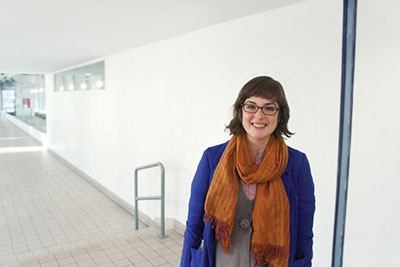Law by design
Do architects and engineers have something to teach the legal profession about innovation?

As anyone who has ever encountered a legal problem knows, the justice system is not exactly great at producing an experience that works for the client.
So how can we make law more accessible, more engaging and more user-friendly?
It’s a tall order — dealing with legal problems is never fun. But Margaret Hagan is trying to prove that design thinking can be a valuable tool for improving access to justice and empowering regular consumers of legal services.
“The missions of law and design are not that separate and [are] quite powerful if you bring them together,” says Hagan, co-director of the Program for Legal Technology and Design at Stanford University. “If law is all about making society more fair and just, design is really about making things that people want to use and that they can use to empower themselves.”
Traditional law firms might not be familiar with design thinking, but it’s nothing new. Since the 1970s, it has inspired architecture and product engineering, and has even been used to inform government policy and programs.
Popularized by the consulting company IDEO and the second coming of Apple products, design thinking is about empathy for human experience — hence the focus on collaboration between the “designer” and “user” and the promotion of cross-disciplinary transfer of knowledge. It also requires iterative experimentation, making adjustments and improving the process through trial and error.
Lawyers as engineers
Can lawyers be compared to engineers? David Howarth, a reader in law at Cambridge University, thinks so. “What is it that lawyers do?” he asked in February at the ReInvent Law Conference in New York. “The public thinks it is litigation. But in the U.K., 80 per cent of lawyers are not involved in litigation. They create artificial social structures. … It is also true that lawyers design regulations and statutes and constitutions.”
Engineers, however, have been exploring design thinking “more carefully, more systematically and for much longer than lawyers have,” says Howarth. Engineers have been using computer-aided design tools for decades. Initially, that was disruptive and unsettling, but, as he reminds lawyers, it transformed the engineering profession by releasing “a great new burst of creativity.”
“Engineers could test more options more quickly and have more ideas and get them somewhere near where the client wanted them to be,” he said.
Howarth sees a similar opportunity for legal practitioners. Technology, he says, “will free lawyers from the small problems, the minutiae of detail and fine accuracy,” and encourage them to think in ways more focused on the client’s needs.
Hagan cautions that discussion about legal innovation tends to place too much emphasis on technology and not enough on design, which should be the driving force, she says, because it is about “making things… that people actually want and can use.”
Keeping it simple
Counterintuitively, today’s challenge for lawyers lies in removing obstacles raised by the complexity of legal problems, says Paul Lippe, the founder and CEO of Legal OnRamp. “In law, we are just in love with complexity, which makes sense if you are a professionally centred professional,” Lippe told the crowd at ReInvent Law. “But if you are trying to serve clients and trying to serve society, it doesn’t.”
A recent graduate of Stanford Law, Hagan is now completing a fellowship teaching at Stanford’s Hasso Plattner Institute of Design, also known as the d.school. She works primarily with interdisciplinary teams to devise “new types of legal services” — from helping foreign students obtain study visas to estate planning for people entering the later stages of their working life.

Legal Technology and Design,
Stanford University, California
The teams go to great lengths to test potential tools and services on real people who represent different generations and cultural backgrounds and have different comfort levels with technology.
“We are learning what good consumer law looks like, what people hate, what they love,” says Hagan.
Through experimentation, Hagan’s working groups are trying to reimagine how legal services should be delivered. “Our basic assumption is that lawyers by themselves cannot solve these problems, even if they are quite smart,” she says. “We bring in engineers. We bring in organizational behaviourists. We bring in political scientists and designers and that kind of mix.”
She has received many different types of requests for designing tools, even from the field of criminal law. “A prosecutor came to us and said, ‘Can you make plea agreements more readable so that when people are presented with them, defendants, that they can get actually informed consent. It will make our lives easier as prosecutors. It will make the defence attorneys’ lives easier and it will make the system more efficient, that we won’t have this problem of plea agreements getting overturned later.’”
Design thinking is not a cure-all for the growing number of challenges facing the legal profession. And it has its share of critics who charge that the success rate for the process is low and who frown upon what they consider the latest hackneyed trend in business thinking.
But to understand what the client really wants, “you have to keep failing at your experiments,” says Hagan. “It’s the stuff that good designs are made of.”


